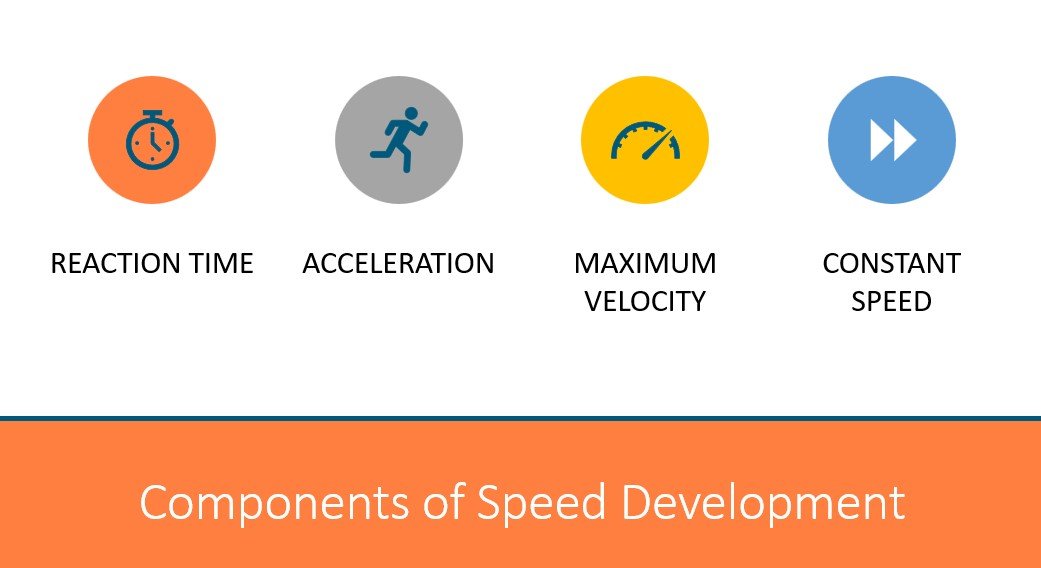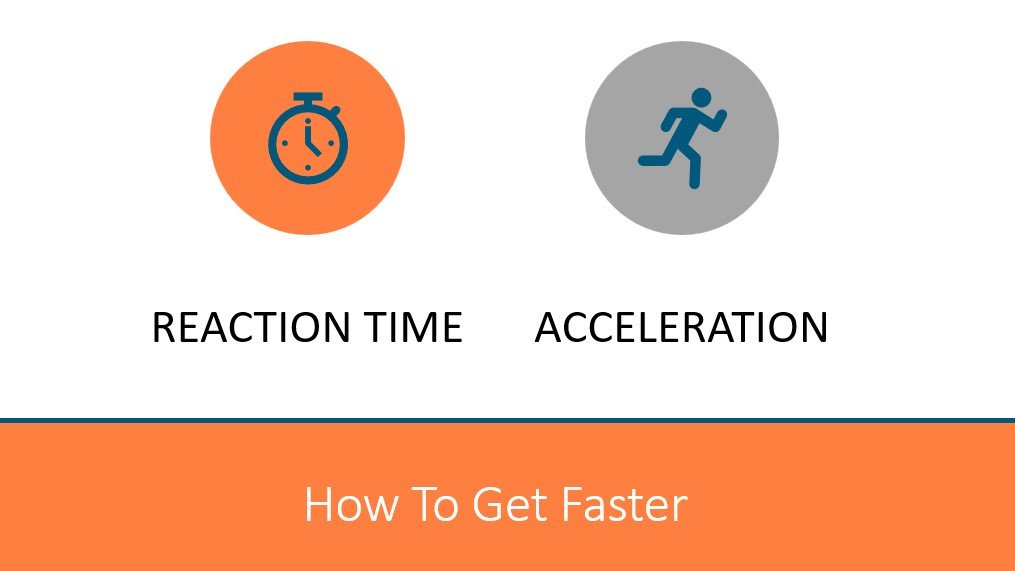Ways to Improve Speed for Athletic Development
When you think of developing speed for athletic performance what are some of the factors you would consider training to get faster? Is it explosiveness? How about repeating sprints so that you run FASTER? Yes, these are components of speed but did you know there are some simpler components to work on to improve speed. Let’s taker a deeper dive into the topic.
First, let’s define speed. Speed is the ability to rapidly move the extremities or the body from one place to another. There are five components that make up speed: reaction time, acceleration, maximal velocity, constant speed, and deceleration. But in reality, to get fast we really need the first four components.
Figure 1: Components of speed development include reaction time, acceleration, maximum velocity, and constant speed
Let’s take a closer look at these four components:
Reaction Time:
Reaction time is the time elapsed between a sensory stimulus and the athletes behavioral response, meaning movement. In research, this is the time elapsed and muscle reading on electromyography. In clinical practice, this is the time elapsed between the stimulus and the first visual movement. Reaction times vary between visual stimuli and auditory stimulus. In sports, the average reaction time for an auditory stimulus is .284 milliseconds and for a visual stimulus, it is .331 milliseconds. This can be assessed in the clinic through video analysis. We record a auditory or visual response and assess the time it takes for the athlete to respond to the stimulus.
To assess reaction time on your own, check the following tests. Although these tests are in a very controlled environment, norms have been established for collegiate athletes.
Acceleration:
Acceleration is the rate of change of velocity in a given direction or in simple terms, the time it takes to get to your maximal speed. In most competitive field sports such as soccer, football, lacrosse, field hockey or basketball, acceleration occurs over a period of 2 and 4 seconds and usually takes no more than 20 meters to reach top running speed in a given sport.
To assess this in the clinic, we can complete the Wall Sprint Drill to assess form technique and the amount of leg drives in 4 seconds. The goal of this drill is to accelerate quickly with excellent form and avoid hitting the hurdle. See below for a video on the Wall Sprint Drill.
Maximal Speed:
Maximum speed is the fastest an individual can run during a given movement. In competitive field sports, it usually occurs in 40 meters. In competitive sprinters, it usually occurs in 60 meters. In general, males peak velocity occurs between the ages of 20 and 28 while females tend to peak in there late teens. In clinical and human performance, it is easy to work on maximal speed by working on sprinting fast either on an field or a treadmill. In general, improving stride rate, more steps per minute, improves maximum speed, rather than stride length.
Constant Speed:
Constant speed refers to the ability to sustain maximal speed as long as possible. In general, this is more related to running economy and an individual’s anerobic energy production. Training this requires the individual to train and improve their lactate threshold.
To get the most bang for your buck, training reaction time and acceleration will get on-field or court speed FASTER
If you are looking for drills to improve speed for athletic performance, contact us today to schedule a consultation
References:
Haugen, T., Tønnessen, E., Hisdal, J., & Seiler, S. (2014). The role and development of sprinting speed in soccer. International journal of sports physiology and performance, 9(3), 432–441. https://doi-org.une.idm.oclc.org/10.1123/ijspp.2013-0121
Mero, A., Komi, P. V., & Gregor, R. J. (1992). Biomechanics of sprint running. A review. Sports medicine (Auckland, N.Z.), 13(6), 376–392. https://doi-org.une.idm.oclc.org/10.2165/00007256-199213060-00002
Shelton and G. Kumar, "Comparison between Auditory and Visual Simple Reaction Times," Neuroscience and Medicine, Vol. 1 No. 1, 2010, pp. 30-32. doi: 10.4236/nm.2010.11004.



